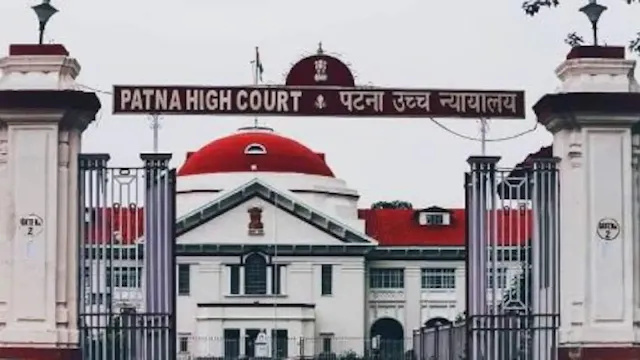The Patna High Court's recent decision to strike down the Bihar Reservation of Vacancies in Posts and Services (for Scheduled Castes, Scheduled Tribes, and Other Backward Classes) Amendment Act, 2023, and the Bihar Reservation (in Admission to Educational Institutions) Amendment Act, 2023, has profound implications for the state's reservation policies. This landmark judgment, delivered by a Division Bench comprising Chief Justice K. Vinod Chandran and Justice Harish Kumar, declared the amendments unconstitutional, emphasizing their violation of Articles 14, 15, and 16 of the Indian Constitution.
Background and Context
The amendments in question aimed to enhance the reservation for Scheduled Castes (SC), Scheduled Tribes (ST), Extremely Backward Classes (EBC), and Backward Classes (BC) from 50% to 65%. The Bihar government justified this increase based on the findings of a caste survey conducted in October 2023, which purportedly highlighted the need for increased representation of these groups in public employment and educational institutions. However, this move was challenged through a Public Interest Litigation (PIL), leading to the High Court's scrutiny.
Legal Framework and Constitutional Provisions
At the heart of the court's decision are the constitutional provisions governing reservations. Articles 15(4) and 16(4) of the Constitution empower the state to make special provisions for the advancement of socially and educationally backward classes, as well as SCs and STs, by reserving posts in public services. However, these provisions must be balanced against the right to equality of opportunity in public employment, as enshrined in Articles 14 and 16(1).
Ceiling Limit of 50%
The court's judgment heavily relied on the precedent set by the Supreme Court in the landmark case of Indra Sawhney v. Union of India (1992), which established a ceiling limit of 50% for reservations. This limit was reiterated in subsequent rulings, including M.R. Balaji v. State of Mysore (1962), M. Nagaraj v. Union of India (2006), and Union of India v. Rakesh Kumar (2010). These decisions underscore the necessity of maintaining a balance between providing opportunities for backward classes and ensuring equal opportunities for all citizens.
The court found no exceptional circumstances in Bihar that warranted breaching this 50% ceiling. The argument that Bihar's socio-economic conditions justified an increase was dismissed, as the state is neither geographically isolated nor lacking in mainstream socio-economic engagement. Thus, the increase to 65% was deemed unnecessary and unconstitutional.
Proportionate vs. Adequate Representation
A critical aspect of the court's ruling was its distinction between proportionate and adequate representation. The amendments were primarily based on the proportion of backward classes in the state's population, aiming to mirror this proportion in public employment and educational institutions. However, the court highlighted that the Constitution mandates adequate representation, not proportionate representation. The principle of adequate representation ensures that backward classes are sufficiently represented without necessarily equating their population percentage.
The court reiterated that reservations should be based on the need for adequate representation in public services, as opposed to a simplistic reflection of demographic proportions. This distinction is vital in maintaining the delicate balance envisioned by the Constitution between equality and affirmative action.
Lack of Scientific Analysis
The court criticized the Bihar government's approach, noting the absence of a thorough, scientific analysis of the caste survey data before amending the reservation laws. The court emphasized that any increase in reservations must be backed by a detailed study of the socio-economic conditions of various castes, rather than a mere demographic calculation. The lack of such an analysis undermined the legitimacy of the government's decision and contributed to the amendments being struck down.
Adequate Representation in Government Employment
Upon reviewing the caste survey report, the court concluded that backward classes in Bihar are already adequately represented in government employment. This finding further weakened the state's argument for increasing the reservation quota. The court noted that backward classes are represented not only through reserved categories but also in general merit categories, indicating a significant presence in public services.
Implications and Future Directions
The Patna High Court's decision has significant implications for the state's reservation policies and sets a precedent for other states considering similar measures. By reaffirming the 50% ceiling and emphasizing the need for adequate rather than proportionate representation, the court has provided clear guidelines for future reservation policies.
This ruling also underscores the importance of a rigorous, data-driven approach in formulating affirmative action policies. Governments must conduct comprehensive socio-economic studies to justify any changes in reservation quotas, ensuring that such measures align with constitutional principles and judicial precedents.
Conclusion
The Patna High Court's decision to strike down the 65% reservation amendments reinforces the constitutional balance between equality and affirmative action. By adhering to the 50% ceiling and distinguishing between proportionate and adequate representation, the court has provided a clear framework for reservation policies. This judgment not only addresses the immediate issue in Bihar but also offers valuable guidance for the formulation of equitable and constitutionally sound affirmative action policies across India.










0 Comments
Thank you for your response. It will help us to improve in the future.